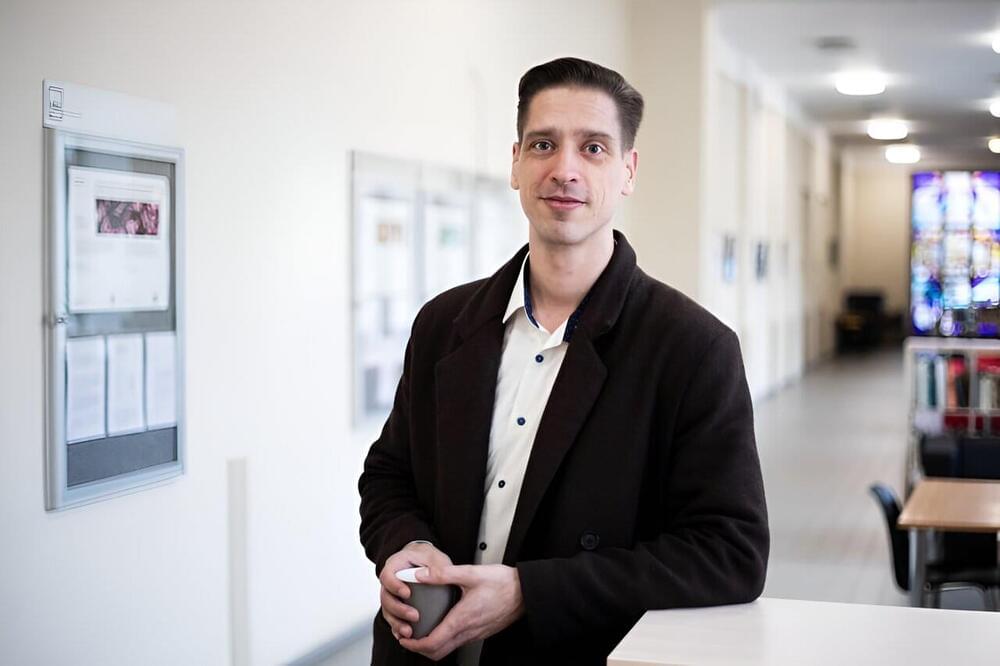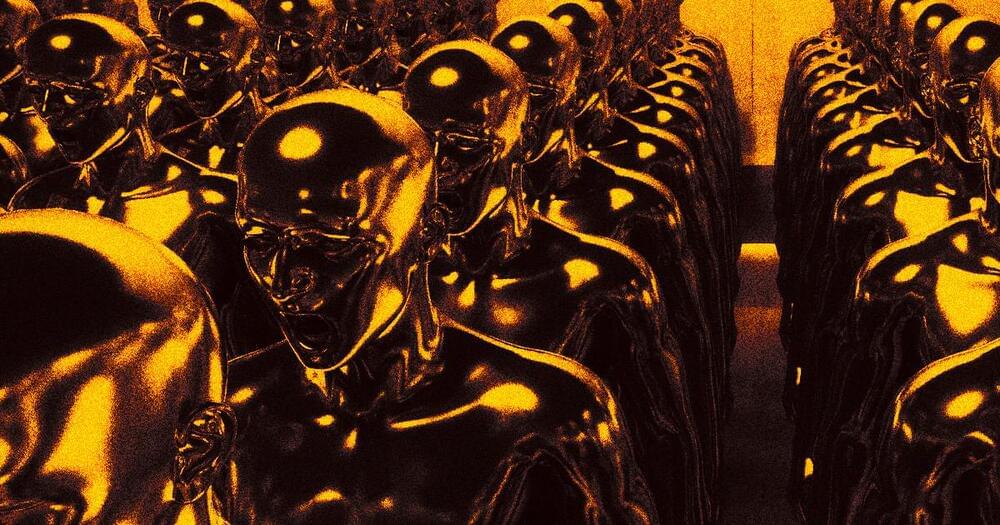The engineers at Fourier Intelligence have successfully combined functionality with a touch of creativity, making the GR-1 more than just a caregiver. The 300-Nm hip actuators, equivalent to 221 pound-feet (lb-ft), empower the GR-1 to lift a remarkable 110 lb (50 kilograms, kg) – an impressive feat for a robot of its stature. This capability positions the GR-1 as valuable in assisting patients with various activities, from getting up from a bed or toilet to navigating a wheelchair.
Get the latest international news and world events from around the world.

The governance gap: Balancing innovation and ecological responsibility in a world at risk
“The world isn’t doing terribly well in averting global ecological collapse,” says Dr. Florian Rabitz, a chief researcher at Kaunas University of Technology (KTU), Lithuania, the author of a new monograph, “Transformative Novel Technologies and Global Environmental Governance,” recently published by Cambridge University Press.
Greenhouse gas emissions, species extinction, ecosystem degradation, chemical pollution, and more are threatening the Earth’s future. Despite decades of international agreements and countless high-level summits, success in forestalling this existential crisis has remained elusive, says Dr. Rabitz.
In his new monograph, the KTU researcher delves into the intersection of cutting-edge technological solutions and the global environmental crisis. The author explores how international institutions respond (or fail to respond) to high-impact technologies that have been the subject of extensive debate and controversy.

SpaceX launches “limitless” ‘zero fuel’ engine into space
IVO chief executive Richard Mansell said his company performed 100 hours of vacuum chamber testing before the launch, during which the quantum drive produced a small amount of thrust.
“Deploying Quantum Drive into orbit in a Rogue satellite on SpaceX Transporter 9 is a milestone for the future of space propulsion,” Mansell said.
“Quantum Drive’s capability allows Rogue to produce new satellite vehicles with unlimited Delta V.”

Scientists Warn That AI Threatens Science Itself
What role should text-generating large language models (LLMs) have in the scientific research process? According to a team of Oxford scientists, the answer — at least for now — is: pretty much none.
In a new essay, researchers from the Oxford Internet Institute argue that scientists should abstain from using LLM-powered tools like chatbots to assist in scientific research on the grounds that AI’s penchant for hallucinating and fabricating facts, combined with the human tendency to anthropomorphize the human-mimicking word engines, could lead to larger information breakdowns — a fate that could ultimately threaten the fabric of science itself.
“Our tendency to anthropomorphize machines and trust models as human-like truth-tellers, consuming and spreading the bad information that they produce in the process,” the researchers write in the essay, which was published this week in the journal Nature Human Behavior, “is uniquely worrying for the future of science.”
OpenAI researchers reportedly warned internally about breakthrough AI discovery “Q-Star”
In a letter to the company’s board of directors, OpenAI researchers are said to have warned of an AI discovery that could pose a threat to humanity.
This was reported by Reuters, citing two sources familiar with the matter. The letter is also linked to Altman’s firing, but is not the only reason, according to Reuters.
According to a source from The Verge, the board never received such a letter, which is why it played no role in Altman’s firing. Reuters says it has not seen the letter. The Information reports not on the letter itself, but on the “Q*” breakthrough described in it.

In a First, Bacteria Seen Storing Memories And Passing Them on For Generations
A single-celled organism with no brain or nervous system to speak of may still form memories and pass those memories on to future generations, according to new research.
The ubiquitous bacterium, Escherichia coli, is one of the most well-studied life forms on Earth, and yet scientists are still discovering unexpected ways that it survives and spreads.
Researchers at the University of Texas and the University of Delaware have now uncovered a potential memory system that allows E. coli to ‘remember’ past experiences for several hours and generations thereafter.
Falcon 9 Flies, As SpaceX Heads for 10-Launch Month, 100-Launch Year
@SpaceX has launched its eighth Falcon 9 mission of November, as it heads towards its first 10-launch month and conceivably its first 100-launch year.
Nobel Prize in Phyiscs 2023
Pierre Agostini, Ferenc Krausz and Anne L’Huillier share the 2023 Nobel Prize in Physics for experiments that “have given humanity new tools for exploring the world of electrons inside atoms and molecules.” A more succinct description is that they have given us attosecond physics.
Attosecond physics is the science of the exceedingly, extremely, exceptionally [insert your own hyperbolic adverb here] fast. To put it into context, L’Huillier’s first call from the Nobel Prize’s Adam Smith after she received the news took 3 minutes 48 seconds, or-1 attoseconds. Her first heartbeat during that call lasted a second, or a billion billion attoseconds. Almost defying a description, an attosecond is an unfathomably tiny amount of time. But it happens to be the natural timescale of the near-instantaneous dance of electrons.
Being able to gain a glimpse into the incredibly tiny scale of electrons in the incredibly fast attosecond regime opens the door to directly measuring, and perhaps even controlling, quantum processes. And this, in turn, offers huge potential to advance research, not only in quantum physics but also in biology, chemistry, medicine, electronics and many more areas important to science and society.
Virgin Galactic sets dates for first commercial space flights
After multiple delays, billionaire Richard Branson’s Virgin Galactic is finally ready to begin commercial space flights — and you can snag a ticket for $450,000.
The background: In June 2021, Virgin Galactic became the first spaceline to secure permission from the FAA for commercial space flights, suggesting that it was pulling ahead of rivals Blue Origin and SpaceX in the space tourism arena.
While both of those companies planned to use rockets to send crewed capsules into space, Virgin Galactic’s idea was to put people in a spaceplane — a vehicle that can fly through Earth’s atmosphere like a plane, but also navigate space like a spacecraft.

Seven of the latest skyscrapers designed by BIG
Following the completion of The Spiral in New York, we take a look at seven of the latest skyscrapers designed by its architect, Danish studio BIG, along with a “landscaper”
From CapitaSpring in Singapore to O-Tower in China, a mix of recently completed projects and others still under construction make up the list of towers by the studio, which was founded in 2005 by Danish architect Bjarke Ingels.
Common threads throughout the projects are the incorporation of greenery to bring occupants closer to nature and unusual forms that challenge traditional boxy skyscrapers that dominate many city skylines.